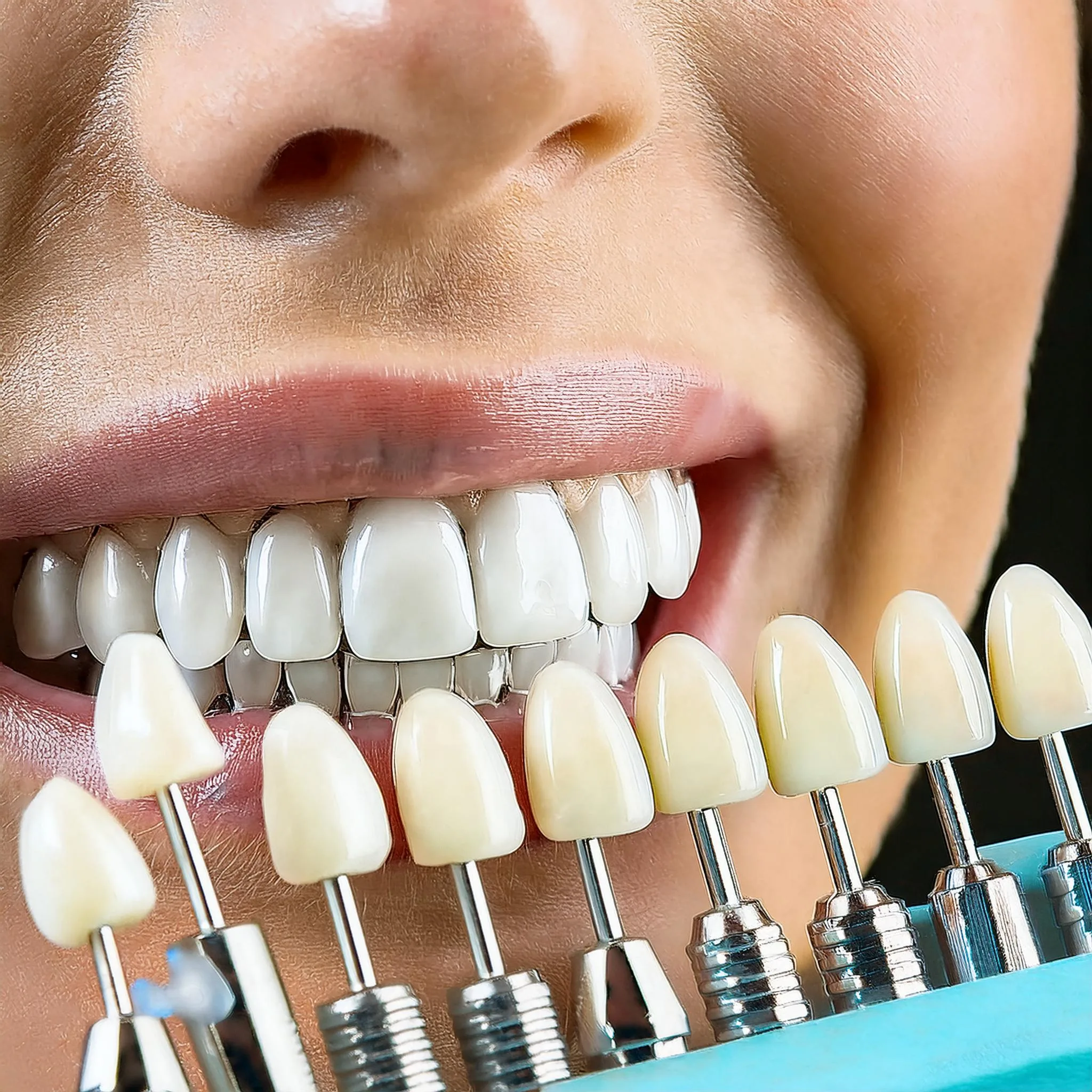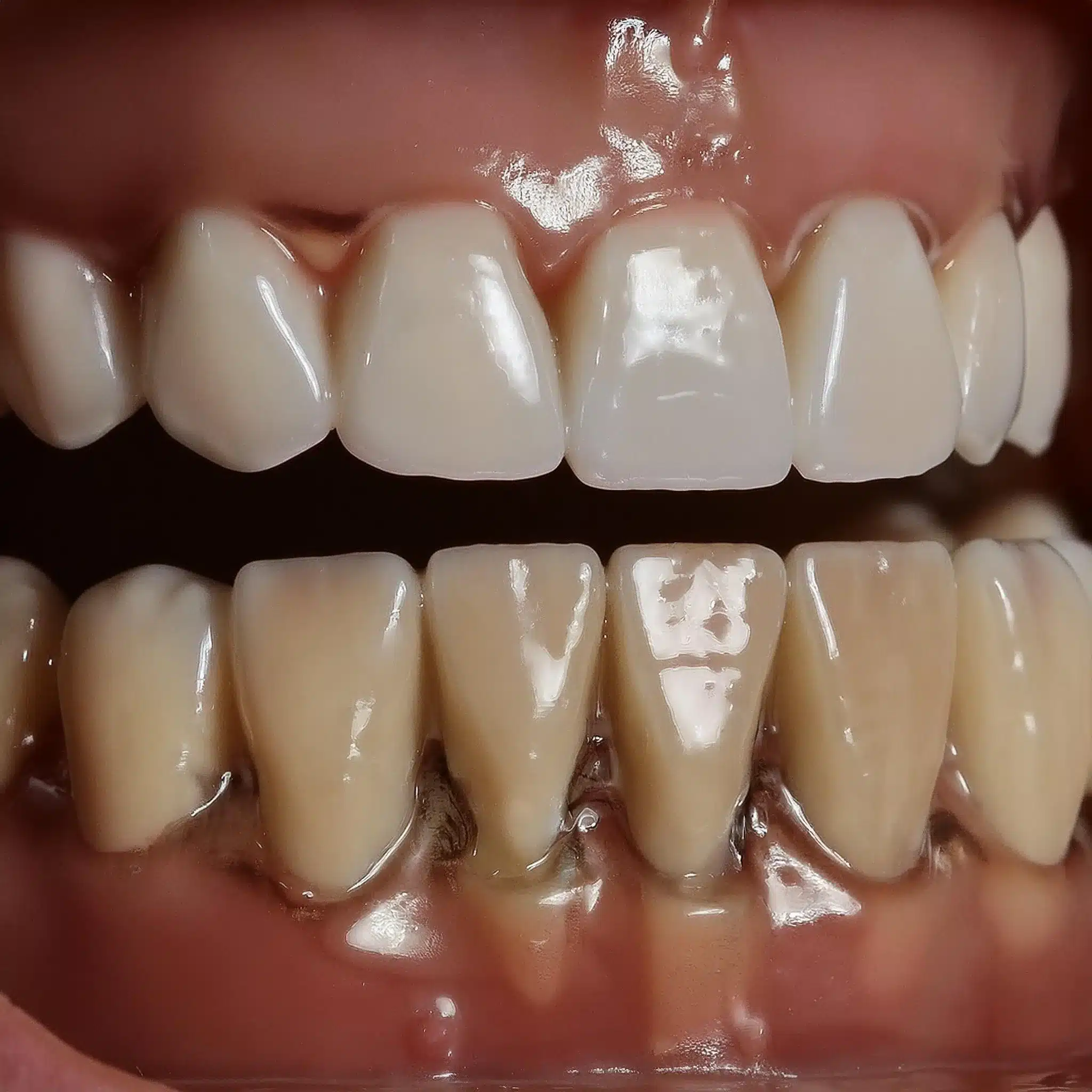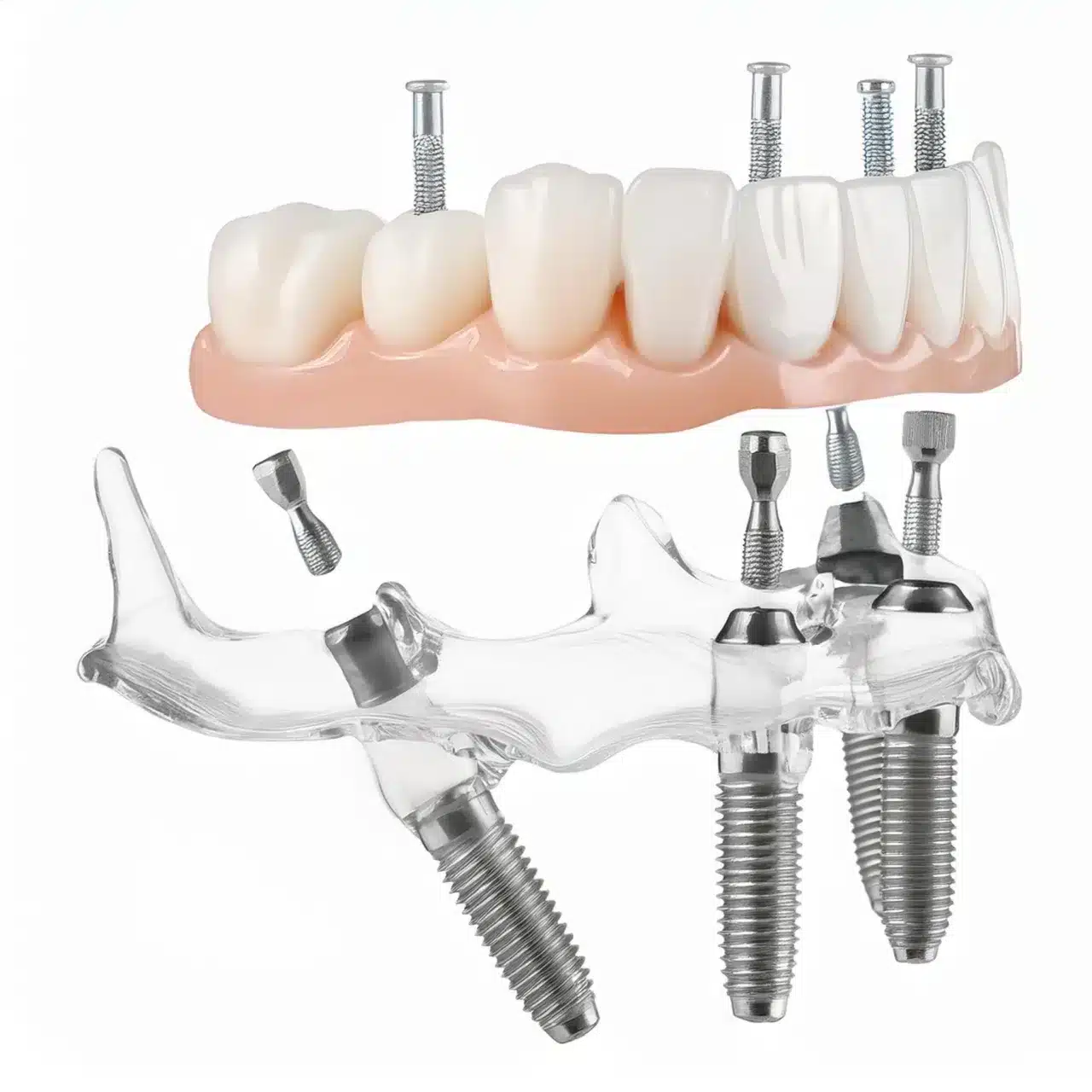Dental implant repair is a big problem for many people who have invested in dental implants and are now experiencing dental implant complications.
If you’re having issues with your dental implants—pain, swelling, or loosening—you’re probably wondering what to do to get them working and looking like new.
What addresses Dental Implant Repair?
Dental implant repair addresses issues with implants, restoring their function and appearance.This process may involve surgery to replace damaged or missing teeth, requiring stages, healing time, and consideration of possible complications.Common issues include peri-implant mucositis and peri-implantitis, affecting 45% and 20% of implants, respectively.
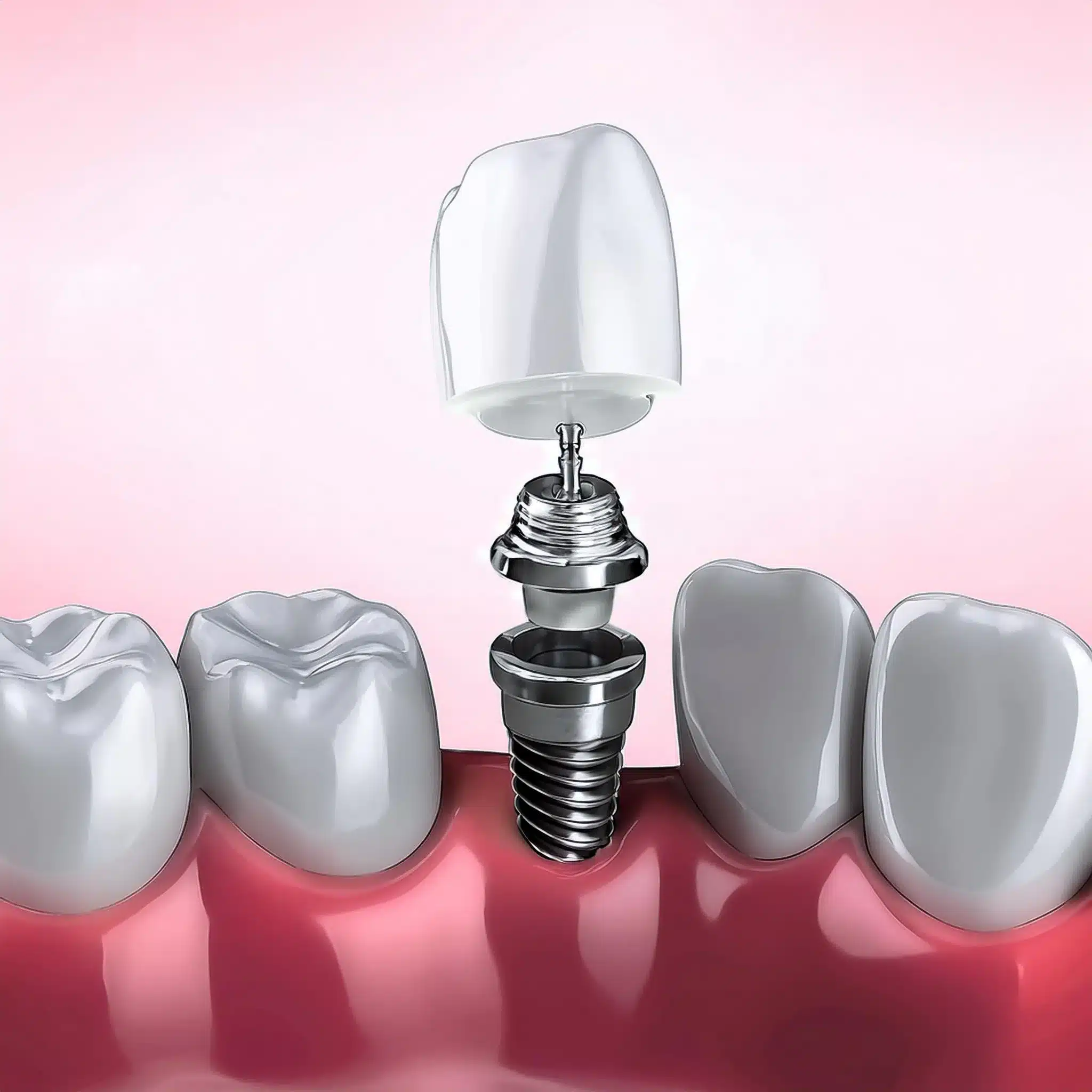
Signs of Dental Implant Failure
Common Symptoms
Dental implant failure can show up in many ways, which need to be identified early to prevent further complications.
Common symptoms are:
Persistent Pain: Some pain is normal after implant placement but ongoing pain means there’s an issue. Persistent pain could mean infection or implant instability.
Swelling and Inflammation: Swelling around the implant site is a sign of peri-implantitis, which affects 20% of implants (1)
Mobility: An implant should be stable.If it starts to feel loose, it may mean bone loss or improper integration with the jawbone.
Broken Dental Implant: While rare, a broken dental implant can occur, often involving the abutment or crown.
Proper diagnosis and repair by a dental professional are crucial.
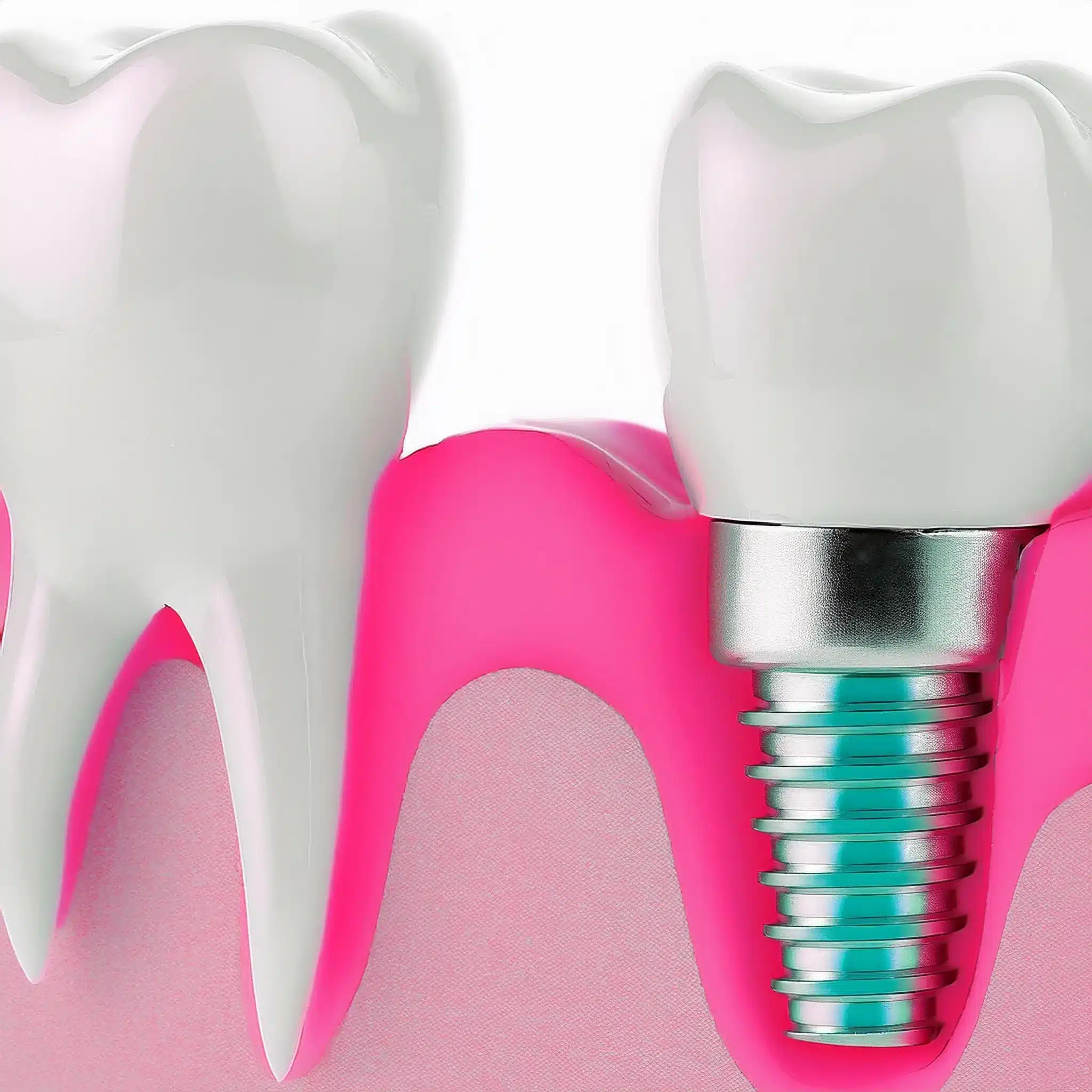
Look Out For
Early signs of dental implant failure need to be identified to intervene in time. Look out for:
Gum Recession: If the gums around the implant start to recede, the implant threads will be exposed and may fail.
Difficulty Chewing: If chewing is painful or difficult, it may be due to implant misalignment or failure.
Infection Indicators: Redness, pus, or bad taste in the mouth are indicators of infection, which is a major cause of implant failure.
Failed Dental Implant: Early intervention is crucial when dealing with a failed dental implant. Proper surgical techniques, such as sterilization and bone grafts, may be necessary to address issues like peri-implantitis or insufficient jawbone mass.
| Symptom/Sign | Përshkrimi | Prevalence |
|---|---|---|
| Persistent Pain | Ongoing pain that may indicate infection or instability. | Common in early failures |
| Swelling and Inflammation | Notable swelling around the implant site. | Approximately 20% (1) |
| Mobility | Implant feels loose, indicating bone loss or improper integration. | Significant indicator of failure |
| Gum Recession | Gums recede around the implant, potentially exposing threads. | Common with peri-implantitis |
| Difficulty Chewing | Painful or difficult chewing due to misalignment or failure. | Frequent in misaligned implants |
| Infection Indicators | Redness, pus, or bad taste indicating infection. | Common in peri-implantitis cases |
How Are Dental Implants Repaired?
When Can a Repair Be Done?
A dental implant can be repaired when the underlying issues are identified early and addressed properly.
Several factors determine if a repair can be done:
Extent of Damage: Minor issues like a loose crown or minor bone loss can be repaired without replacing the entire implant.
Timing of Intervention: Early intervention is key. Immediate repairs have shown to improve patient satisfaction and aesthetic outcomes (1)
Condition of Surrounding Tissue: Healthy gum and bone tissue is essential for a successful repair. If peri-implant diseases are present, they need to be treated first.
Broken Dental Implant Abutment: A broken dental implant abutment, which is the metal connector securing the dental implant crown, can often be repaired without needing to replace the entire dental implant. Dental implants offer numerous benefits and advantages, including the ability to mimic natural tooth function and aesthetics, prevent bone loss, and provide a long-lasting solution compared to other options.
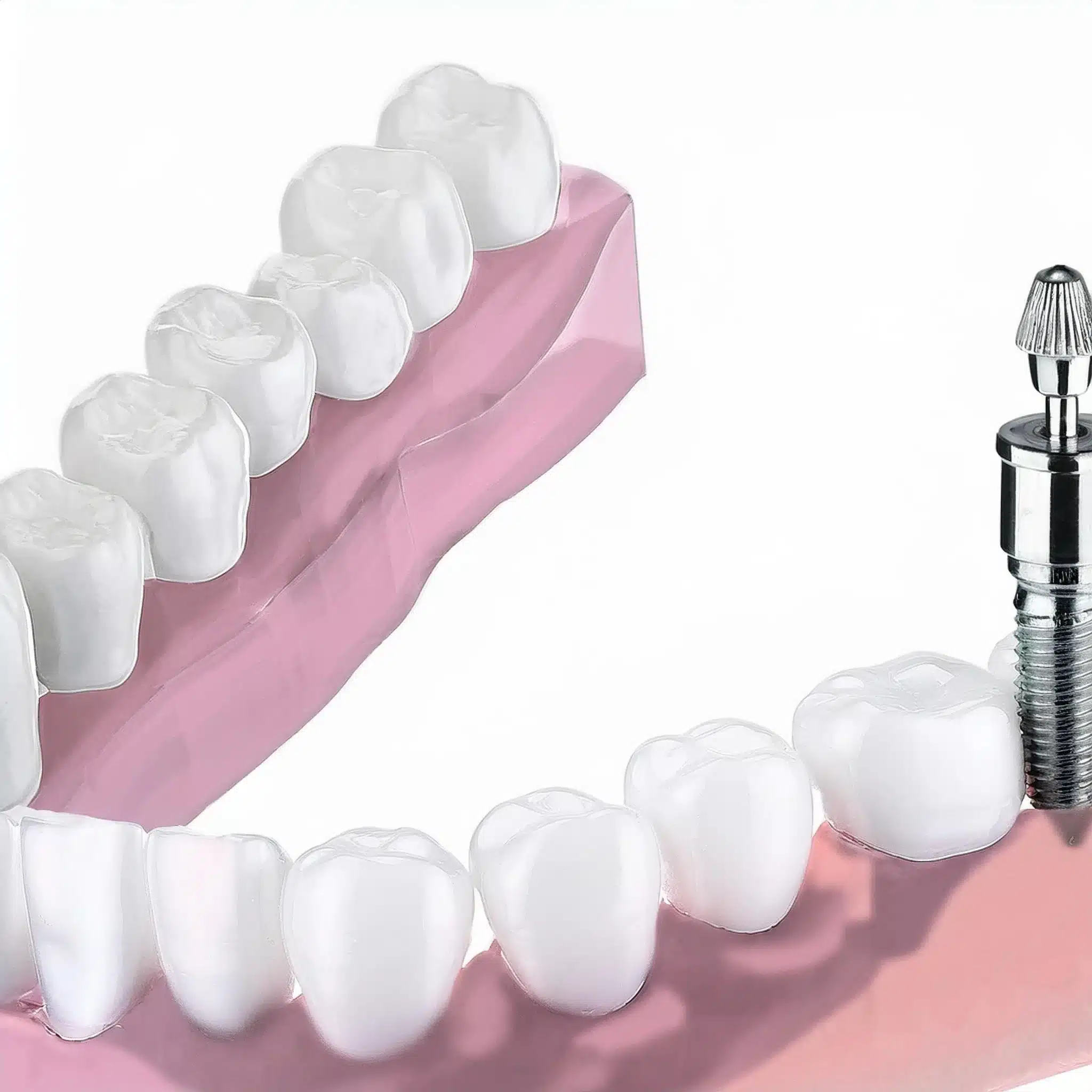
Treatment Options
There are several treatment options for dental implant repair depending on the nature of the problem:
Crown Replacement: If the crown is damaged or loose, it can be replaced or re-cemented. This is a common and simple repair.
Shartimi i kockave: For significant bone loss, bone grafting may be needed to provide a stable base for the implant (3)
Antibiotic Therapy: For infections, antibiotics may be prescribed to kill bacteria and reduce inflammation.
Surgical Intervention: In severe cases, surgical intervention may be needed to remove infected tissue or reposition the implant.
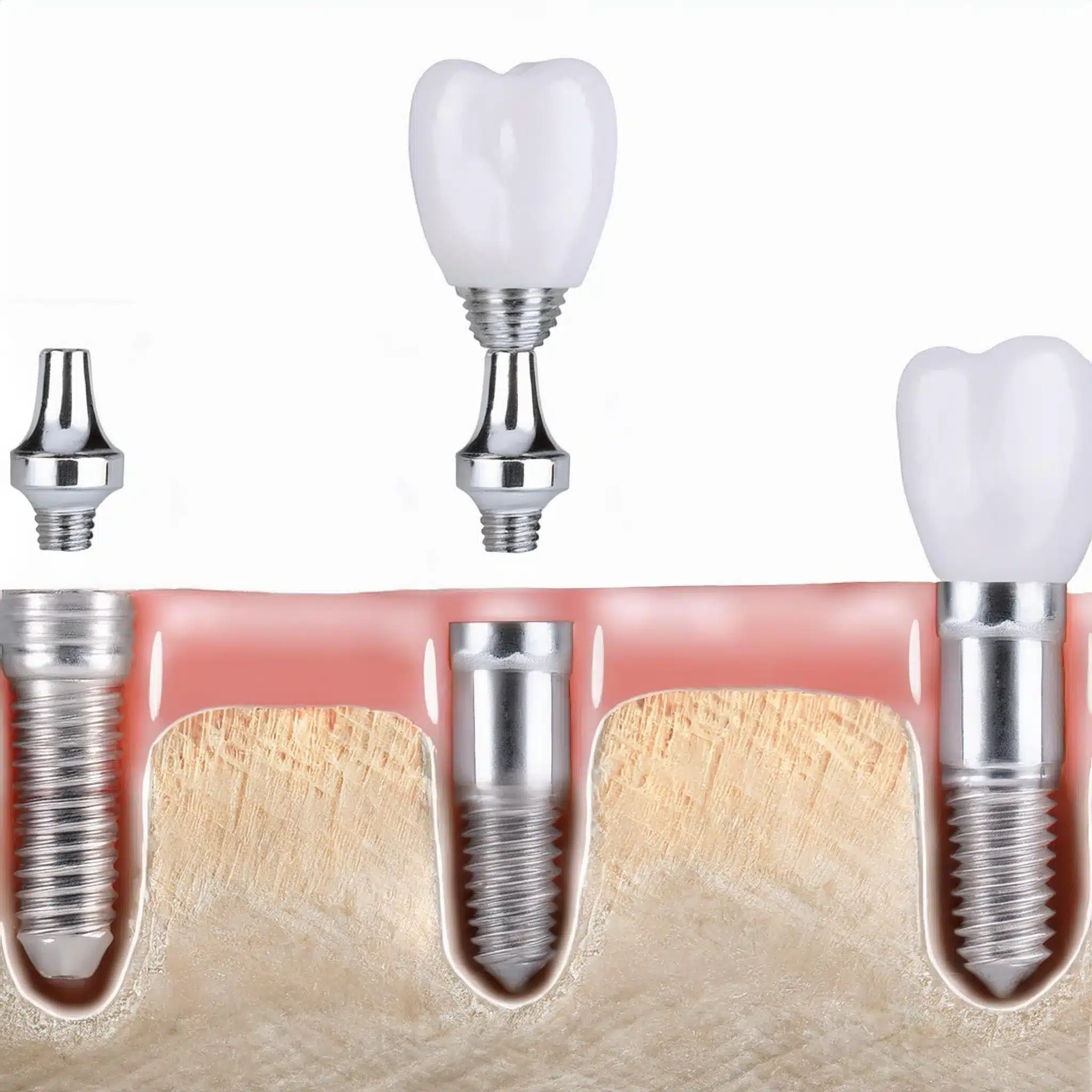
Causes of Dental Implant Failure
Surgical Errors
Surgical errors are a major cause of dental implant failure.
These errors can occur during the planning, placement, or postoperative phase of the implant procedure.
Common surgical errors are:
Incorrect Implant Placement: Misalignment or improper positioning of the implant can fail. This can be due to poor planning or lack of experience (2)
Insufficient Bone Support: Placing an implant in an area with insufficient bone density or volume can lead to instability and failure (3)
Nerve Damage: Nerve damage during surgery can cause pain, numbness and implant failure (5)
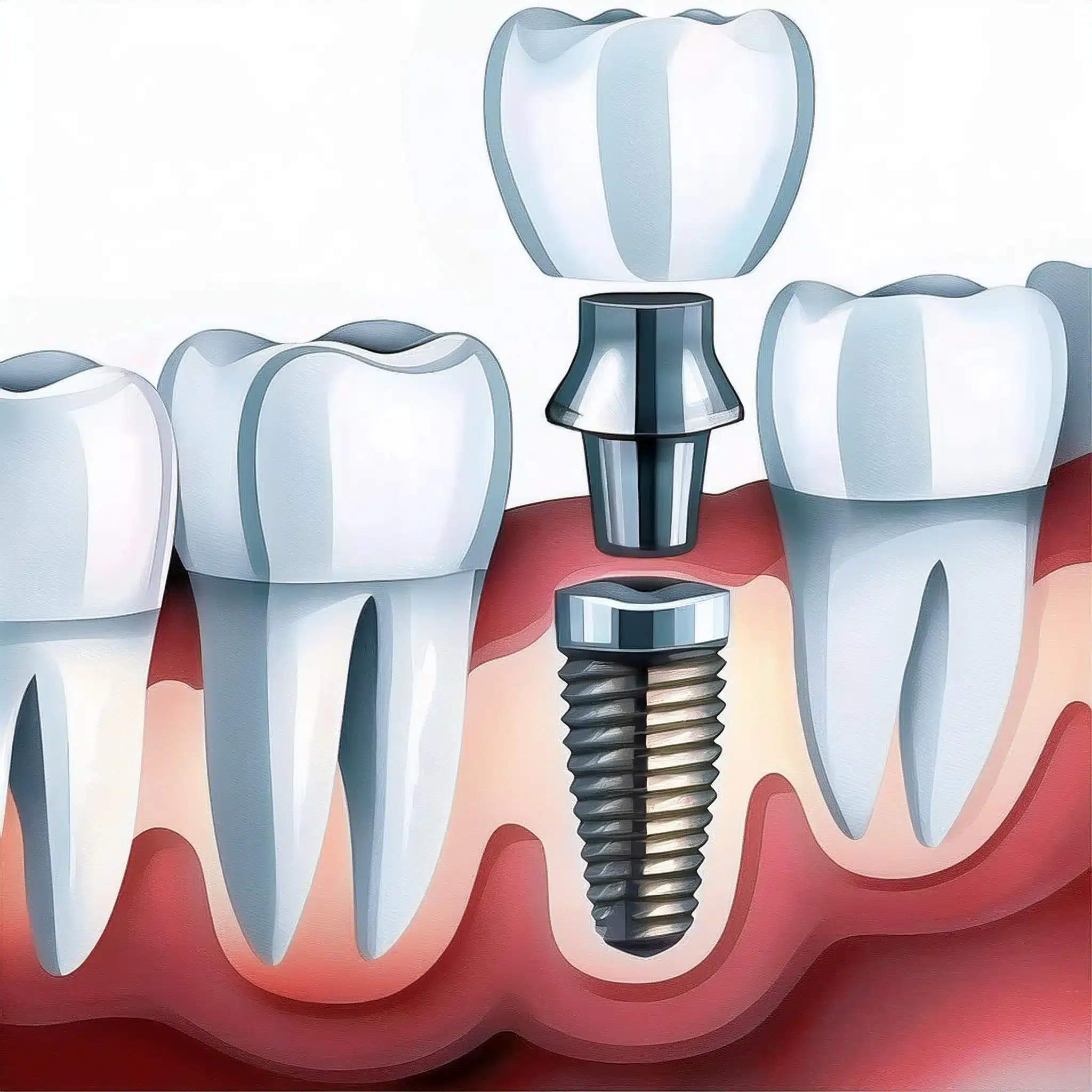
Peri-implantitis and Other Infections
Peri-implantitis and other infections are major causes of dental implant failure.
These infections can be caused by bacterial contamination during surgery or poor oral hygiene post-surgery. Key points are:
Bacterial Contamination: Bacteria like Prevotella intermedia, Porphyromonas gingivalis and Aggregatibacter actinomycetemcomitans are associated with peri-implantitis (4)
Biofilm Formation: Biofilm formation on the implant surface can cause chronic inflammation and bone loss (6)
Systemic Factors: Systemic conditions like diabetes mellitus, osteoporosis and smoking can increase the risk of peri-implantitis and implant failure (7)
How to Prevent Dental Implant Issues
Maintenance Tips
Preventing dental implant issues requires maintenance and care. Here are some tips:
Daily Brushing and Flossing: Use a soft-bristled toothbrush and floss daily to remove plaque and bacteria.
Regular Check-ups: Visit your dentist twice a year for biannual cleanings and check-ups to ensure your implants are healthy.
Avoid Abrasive Products: Use gentle oral care products to avoid damaging the implant surface (2)
Dietary Considerations: Avoid sticky or hard foods that can damage the implant or surrounding tissue (2)

Why Regular Check-ups are Important
Regular check-ups are crucial for the long-term success of dental implants.
These visits allow your dentist to:
Clean the Implant: Remove any plaque or tartar that has accumulated on the implant.
Monitor Oral Hygiene: Ensure your oral hygiene is effective in keeping your implants healthy.
Early Detection of Issues: Detect any potential issues early, such as peri-implantitis or mucositis, to prevent complications.
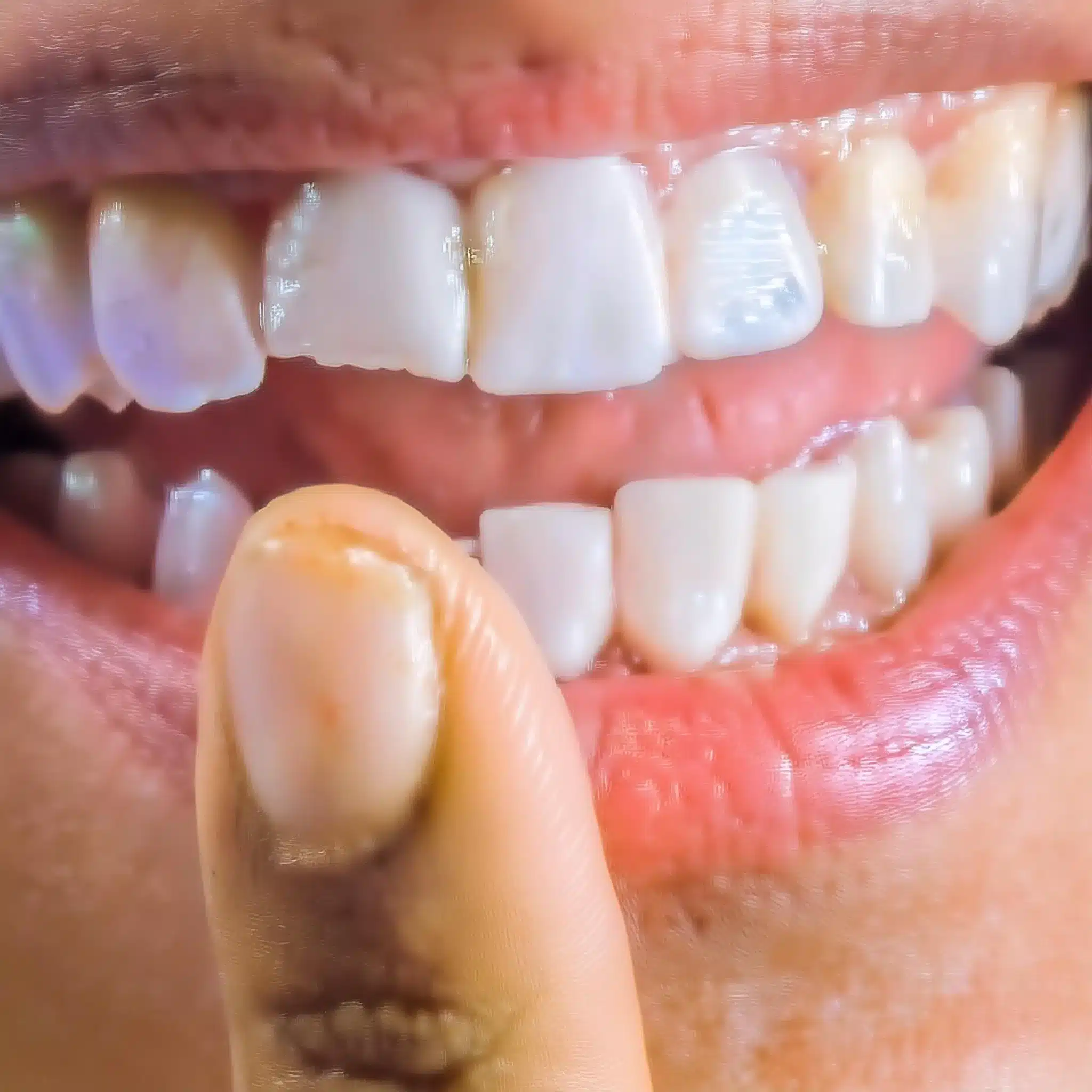
Përfundim & Çështje kryesore
Key-takeaways:
Maintenance: Essential for preventing complications and ensuring long-term success of dental implants, with proper care contributing to the overall success rate of dental implants which remains high when maintenance protocols are followed.
Early Detection: Early detection can reduce the risk of implant failure.
Professional Care: Regular check-ups and cleanings are necessary for dental implants.
konkluzioni:
Dental implant repair is a big concern for those who have already invested in dental implants.
Knowing the signs of failure, repair options, and prevention strategies can help in maintaining the longevity and success of dental implants.
Follow maintenance tips and seek professional care early to keep your dental implants healthy and functional.
Pyetjet e shpeshta
Referencat
(1) Esposito M, Grusovin MG, Coulthard P, et al. Interventions for replacing missing teeth: dental implants in fresh extraction sockets. Cochrane Database Syst Rev. 2006;(3):CD005968.
Neni: Interventions for replacing missing teeth: dental implants in fresh extraction sockets
(2) Albrektsson T, Zarb G, Worthington P, et al. Dental implants: a review. J Dent. 1992;20(1):11-25.
Neni: Dental implants: a review
(3) Sailer I, Mühlemann S, Zwahlen M, et al. Dental implants. J Clin Periodontol. 2018;45(Suppl 20):S278-S293.
Neni: Implantet Dentare
(4) Heitz-Mayfield LJ, Lang NP. Peri-implant disease: aetiology, diagnosis and treatment. Int J Oral Maxillofac Implants. 2010;25(3):377-383.
Neni: Peri-implant disease: aetiology, diagnosis and treatment
(5) Panchal M, Khare S, Khamkar P, et al. Dental implants: A review of types, design analysis, materials, additive manufacturing methods, and future scope. Mater Today Proc. 2022;49:2165-2172.
